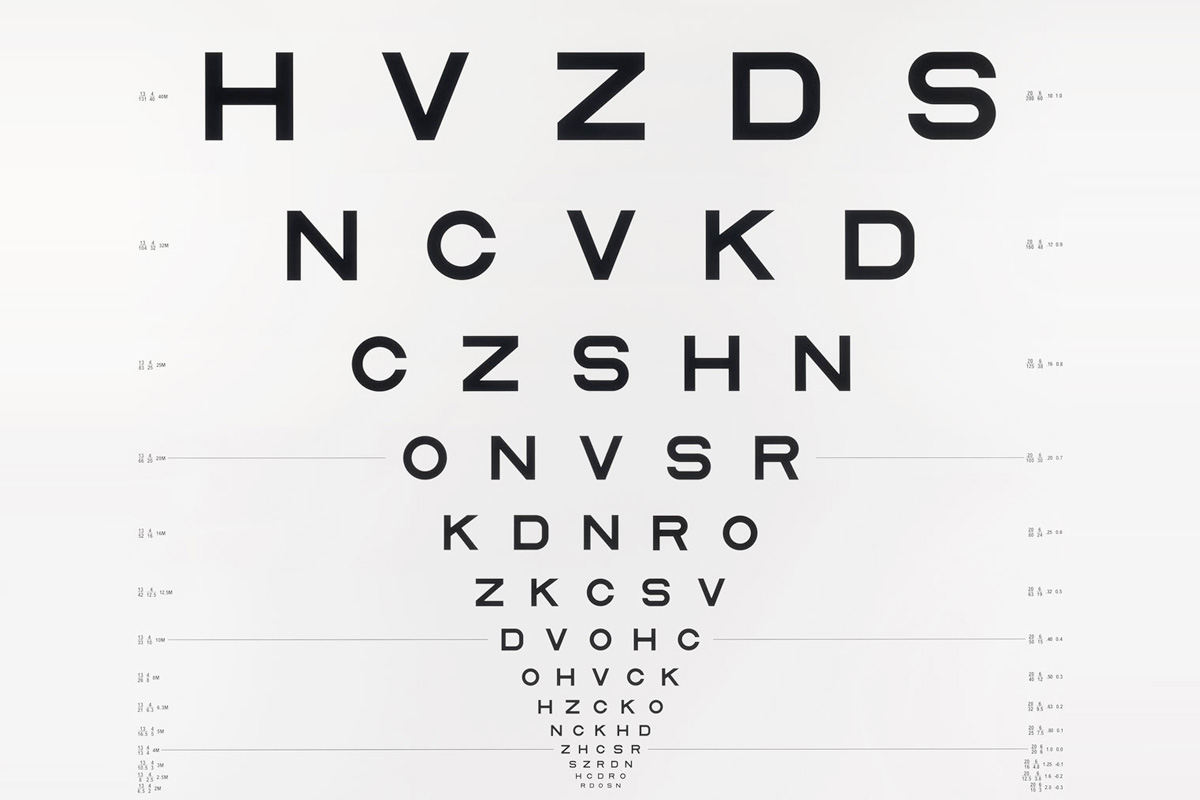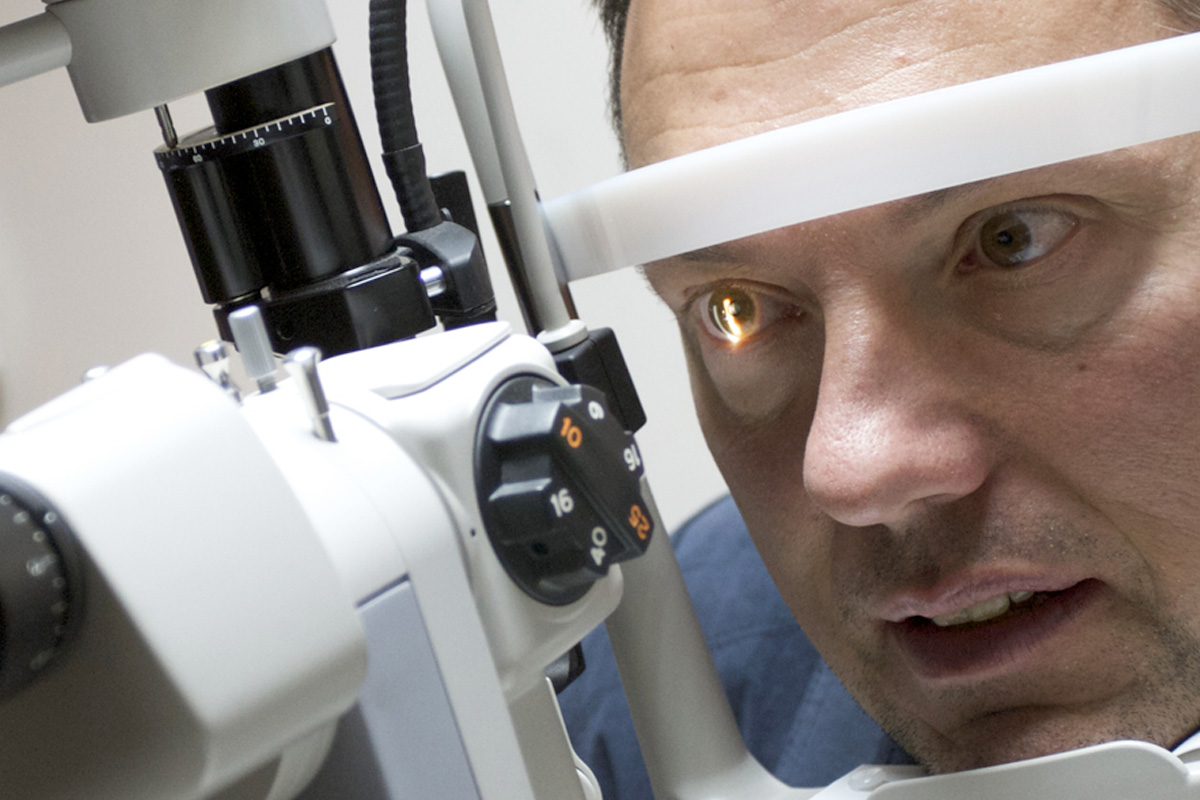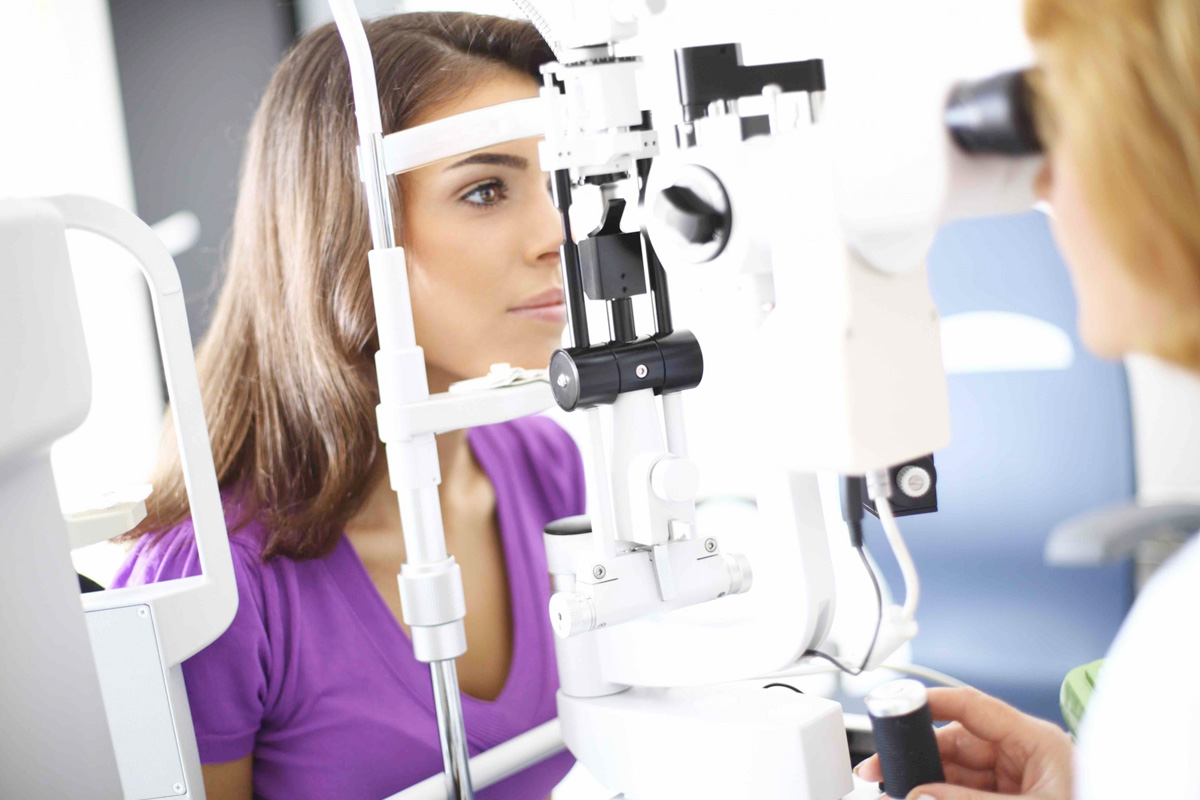What is an Eye Examination?
An Eye Examination is a series of tests done to check your vision and the health of your eyes.
How the Eye Examination is Performed
First, you will be asked if you are having any eye or vision problems. You will be asked to describe these problems, how long you have had them, and any factors that have made them better or worse.
Your history of glasses or contact lenses will also be reviewed. The Optometrist will then ask about your overall health, including any medications you take and your family’s medical history.
Next, the Optometrist will check your vision (visual acuity) using a Snellen chart.
You will be asked to read random letters that become smaller line by line as your eyes move down the chart.
To see if you need glasses, the Optometrist will place several lenses in front of your eye, one at a time, and ask you when the letters on the Snellen chart become easier to see. This is called a refraction test.


Other parts of the eye examination include tests to:
- See if you have proper 3D vision (stereopsis).
- Check the eye muscles by asking you to look in different directions at a penlight or other small object.
- Examine the pupils with a penlight to see that they respond (constrict) properly to light.
You may be given eyedrops to open up (dilate) your pupils. This allows the Optometrist to use a device called an ophthalmoscope to view the structures at the back of the eye. This area is called the fundus. It includes the retina and nearby blood vessels and optic nerve.
Another magnifying device called a Slit lamp is used to:
- See the clear surface of the eye (eyelids, cornea, conjunctiva, sclera, and iris)
- Check for glaucoma using a method called tonometry
- Colour Blindness is tested using coloured dots that form numbers.
How to Prepare for the Test
Make an appointment with an Optometrist (An Appointment is not always necessary). Avoid eye strain on the day of the test. You may need someone to drive you home if the Optometrist uses eye drops to dilate your pupils.
Why the Test is Performed
All children should have an eye examination around the time when they learn the alphabet, and then every 1 to 2 years afterward. Screening should begin sooner if any eye problems are suspected.
How the Test Will Feel
The tests cause no pain or discomfort.

Between ages 20 and 39:
- A complete eye examination should be done every 2 to 3 years
- Adults who wear contact lenses need yearly eye examinations
- Certain eye symptoms or disorders may require more frequent examinations
Adults over 40 who have no risk factors or ongoing eye conditions should be screened:
- Every 2 years for adults ages 40 – 54
- Every 1 to 3 years for adults ages 55 – 64
- Every 1 to 2 years for adults age 65 and older
First, you will be asked if you are having any eye or vision problems. You will be asked to describe these problems, how long you have had them, and any factors that have made them better or worse.
Your history of glasses or contact lenses will also be reviewed. The Optometrist will then ask about your overall health, including any medications you take and your family’s medical history.
Next, the Optometrist will check your vision (visual acuity) using a Snellen chart.
You will be asked to read random letters that become smaller line by line as your eyes move down the chart.
To see if you need glasses, the Optometrist will place several lenses in front of your eye, one at a time, and ask you when the letters on the Snellen chart become easier to see. This is called a refraction test.


Other parts of the eye examination include tests to:
- See if you have proper 3D vision (stereopsis).
- Check the eye muscles by asking you to look in different directions at a penlight or other small object.
- Examine the pupils with a penlight to see that they respond (constrict) properly to light.
Another magnifying device called a Slit lamp is used to:
- See the clear surface of the eye (eyelids, cornea, conjunctiva, sclera, and iris)
- Check for glaucoma using a method called tonometry
- Colour Blindness is tested using coloured dots that form numbers.
How to Prepare for the Test
Make an appointment with an Optometrist (An Appointment is not always necessary). Avoid eye strain on the day of the test. You may need someone to drive you home if the Optometrist uses eye drops to dilate your pupils.Why the Test is Performed
All children should have an eye examination around the time when they learn the alphabet, and then every 1 to 2 years afterward. Screening should begin sooner if any eye problems are suspected.How the Test Will Feel
The tests cause no pain or discomfort.
Between ages 20 and 39:
- A complete eye examination should be done every 2 to 3 years
- Adults who wear contact lenses need yearly eye examinations
- Certain eye symptoms or disorders may require more frequent examinations
Adults over 40 who have no risk factors or ongoing eye conditions should be screened:
- Every 2 years for adults ages 40 – 54
- Every 1 to 3 years for adults ages 55 – 64
- Every 1 to 2 years for adults age 65 and older


